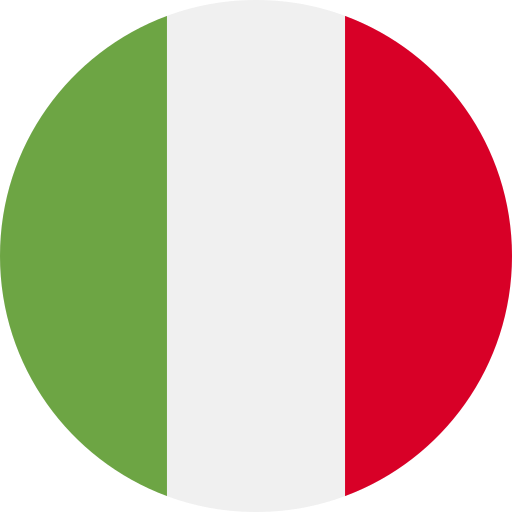When I think about the rich tapestry of languages in Europe, Italian and Swiss Italian stand out for their unique characteristics. While both share roots in the beautiful Italian language, subtle differences set them apart. These variations reflect not just linguistic nuances but also cultural influences that have shaped how people communicate in different regions.
In this article, I’ll explore what makes Swiss Italian distinct from its standard counterpart. From pronunciation to vocabulary and even regional dialects, understanding these differences offers a glimpse into Switzerland’s diverse heritage. Join me as we delve into the fascinating world of language and discover why Swiss Italian is more than just an accent—it’s a reflection of identity and tradition.
Overview of Italian and Swiss Italian
Italian and Swiss Italian share a common root but exhibit distinct differences shaped by historical, cultural, and geographical factors. Understanding these variations enhances appreciation for both languages.
Historical Context
Italian evolved from Latin during the 13th century, with various dialects emerging across regions. Swiss Italian developed later, influenced by local languages like German and French. This linguistic evolution reflects Switzerland’s multicultural heritage, incorporating elements from its diverse communities. The recognition of Swiss Italian began in the late 19th century when it gained prominence as part of Switzerland’s national identity.
Geographic Distribution
Swiss Italian is primarily spoken in Ticino and some areas of Graubünden. In contrast, standard Italian serves as Italy’s official language across all regions. While approximately 570,000 people speak Swiss Italian in Switzerland, around 66 million speakers use standard Italian globally. These geographic distinctions contribute to varying pronunciation patterns, vocabulary choices, and expressions unique to each variant.
Linguistic Differences
Swiss Italian exhibits notable distinctions from standard Italian in vocabulary and pronunciation, reflecting the region’s unique cultural influences.
Vocabulary Variations
Vocabulary variations between Swiss Italian and standard Italian arise from local linguistic influences. Swiss Italian incorporates terms borrowed from German and French, such as “Gschwellti” (boiled potatoes) and “mélange” (mixture). Additionally, it features regional expressions specific to daily life in Switzerland. For instance, the term “focaccia” may refer to a flatbread in Italy but can denote a sweet pastry in some Swiss contexts. Such differences enrich the language while demonstrating how geography shapes communication.
Pronunciation Distinctions
Pronunciation distinctions play a crucial role in differentiating Swiss Italian from its standard counterpart. The accent often reflects the influence of neighboring languages, leading to softer consonant sounds and varied intonation patterns. For example, the letter “c” before “e” or “i” is pronounced as /tʃ/ (like ‘ch’ in ‘cheese’) more frequently than in standard Italian. Moreover, vowel sounds can differ; for instance, an open ‘e’ sound might be more common in certain regions of Ticino. These phonetic characteristics contribute to the distinct auditory identity of Swiss Italian.
Cultural Influences
Cultural influences play a significant role in shaping Swiss Italian. The language reflects the rich heritage and traditions of Switzerland, demonstrating how local customs and societal interactions impact communication.
Regional Expressions
Regional expressions in Swiss Italian showcase the interplay between language and culture. Phrases like “mangiare come un maiale” (to eat like a pig) illustrate local culinary habits. Other examples include “andare al mare” (to go to the sea), which can refer to both vacationing at lakes or coastal areas, reflecting Switzerland’s geographical context. These expressions not only enrich the vocabulary but also convey cultural nuances unique to specific regions within Switzerland.
Impact of Surrounding Languages
Surrounding languages significantly influence Swiss Italian, with German and French contributing various lexical items and pronunciation features. For instance, terms like “Käse” (cheese) from German are commonly used alongside standard Italian vocabulary. This blending occurs naturally due to daily interactions among speakers of different languages within multilingual communities. Furthermore, phonetic influences lead to variations such as softer consonants, which enhance conversational fluidity and reflect regional identity.
Practical Implications
Understanding the differences between standard Italian and Swiss Italian has practical implications for language learners and communicators. These distinctions affect various aspects of daily interaction, from learning to navigating cultural contexts.
Learning Swiss Italian
Learning Swiss Italian involves recognizing its unique vocabulary and pronunciation influenced by regional languages. Students often encounter words like “Gschwellti” and phrases that may not appear in standard Italian curricula. Exposure to local dialects enhances comprehension and communication skills, allowing learners to connect more authentically with native speakers. Engaging with multimedia resources such as films, music, and literature in Swiss Italian provides context-rich experiences that deepen understanding. Classes or conversational groups focused on Swiss Italian offer opportunities to practice specific linguistic nuances while fostering cultural appreciation.
Communication Challenges
Communication challenges arise from the divergence between standard Italian and Swiss Italian, particularly for non-native speakers. Accents can vary significantly across regions within Switzerland, creating potential misunderstandings during conversations. For example, softer consonant sounds may confuse those accustomed to standard pronunciations. Additionally, integrating local expressions into everyday dialogue requires familiarity with cultural references that might differ from mainstream Italian culture. Navigating these challenges demands patience and active listening skills while encouraging open dialogues about language use among speakers of different backgrounds.
Conclusion
Understanding the differences between Italian and Swiss Italian has deepened my appreciation for how language reflects culture. The nuances in pronunciation vocabulary and regional expressions reveal much about Switzerland’s diverse heritage.
As I explore this fascinating linguistic landscape I find myself more aware of how history shapes communication. The influence of local languages adds richness to Swiss Italian making it a unique form worthy of recognition.
For anyone looking to connect with this vibrant culture grasping these distinctions becomes essential. Embracing the subtleties enhances not just language learning but also fosters deeper connections with speakers from various backgrounds.








